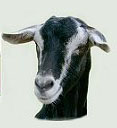|
Getting your first horse or pony
|
Yew Tree Yew, also known as “English yew” or “European yew” is native to western, Central and southern Europe, northwest Africa, northern Iran and southwest Asia. This tree is slow growing and can live along time under the correct conditions. They will grow about 33 to 66 feet (10 to 20 meters) and their trunk can get to about 6 to 7 feet (about 2 meters) around. Yew trees have flat dark green needles that will be lighter green in the underside. The bark is brown and scaly. It will flake in alignment with the stem. Certain species of yew will grow small red berry capsules that are eaten by birds. They are said to be capsules because they contain a small green seed. Toxic to Horses Although yew is toxic to all livestock and farm animals, horses have the lowest tolerance to it. Just a small dose can poison a horse or pony. Other animals, that are also affected but to a lesser degree are pigs, cattle, goats, sheep and other similar livestock. This plant can also poison humans but that is very rare because a larger amount would have to be ingested.
Symptoms Ingestion of yew can cause staggering, muscle tremors, convulsions, collapse, difficulty breathing, coldness and eventually if enough is ingested heart failure. Often times symptoms are missed because fatality occurs very fast.
Poisonous Plants | Horse Health
|
||||
|---|---|---|---|---|---|
The Material contained herein may not be reproduced without the prior written approval of the author. Contents & Graphics Copyright © Horses With Amie (C) 2006-. All Rights Reserved. Our work is not Public Domain. |

